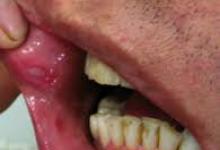Osteoporosis 2016 Year in Review - No new drug approvals, and a crisis in care Save

No new osteoporosis drugs hit the market this year, but two are progressing through the development pipeline and are showing promise. And while the efficacy and safety of denosumab (Prolia) have now been followed out to 10 years in a large clinical trial, the rate of use of bone-strengthening medications among patients at high risk of fracture has fallen by half during the past decade, which constitutes a crisis in care, experts say.
"2016 was an interesting year in the osteoporosis world," observed Stephen Honig, MD, of NYU Langone Medical Center in New York City.
"The cathepsin K inhibitor odanacatib was withdrawn by Merck after reports of an increased incidence of strokes was found in large clinical trials," Honig told MedPage Today.
One clinical trial known as LOFT that began in 2007 enrolled more than 16,000 postmenopausal women with osteoporosis from 387 centers in 40 countries. However, a safety analysis found a 32% increase in risk of stroke (HR 1.32, 95% CI 1.02-1.70, P=0.03) with odanacatib.
During the double-blind base phase of LOFT, 240 strokes occurred, and in the long-term extension phase that included more than 8,000 women, the number of strokes rose to 324, for a hazard ratio of 1.37 (95% CI 1.10-1.71, P=0.005), Michelle O'Donoghue, MD, of Brigham and Women's Hospital in Boston reported at the annual meeting of the American Society for Bone and Mineral Research (ASBMR) in September. This was "very significant," she said.
The anti-fracture efficacy of odanacatib was reviewed at ASBMR by Michael R. McClung, MD, of the Oregon Osteoporosis Center in Portland.
Participants in LOFT were randomized to odanacatib, 50 mg once weekly or placebo. Over 5 years of follow-up, the relative risk reductions were 52% for vertebral fractures, 48% for hip fractures, 26% for nonvertebral fractures, and 67% for clinical vertebral fractures (P0.001 for all). Substantial improvements also were seen for bone mineral density.
"Despite these very positive efficacy data, 2 weeks ago Merck made the announcement that because of a confirmed risk of stroke noted in the study, further development of odanacatib will not occur," McClung said.
Two Drugs Progress in Pipeline
Also in 2016, "no new drugs were approved by the FDA, but two new anabolic drugs are moving toward approval (abaloparatide and romosozumab)," Honig noted.
Abaloparatide is an osteoanabolic drug that stimulates bone formation and has minimal bone resorption, which "allows it to provide an increase in bone density and strength and to restore the lost microarchitecture of bone from osteoporosis," said E. Michael Lewiecki, MD, director of the New Mexico Clinical Research and Osteoporosis Center in Albuquerque.
He reported the results of a phase III study known as ACTIVE at the ASBMR meeting, noting that it included 2,463 women, many of whom had prevalent vertebral fractures or previous nonvertebral fractures. They were randomized to receive subcutaneous abaloparatide, 80 µg daily, teriparatide, 20 µg daily, or placebo for 18 months. The relative risk of new vertebral fractures in the abaloparatide group compared with placebo was 0.14 (95% CI 0.05-0.39, P0.001), he said.
The results of ACTIVE also were published in August in the Journal of the American Medical Association. In that report, the estimated event rate for nonvertebral fracture was 2.7% for abaloparatide compared with 4.7% for placebo, for a hazard ratio of 0.57 (95% CI 0.32-1, P=0.049).
In other osteoporosis news this year, the phase III FRAME study found a 73% relative risk reduction in new vertebral fractures among women treated with romosozumab for 1 year compared with those given placebo, Felicia Cosman, MD, of Helen Hayes Hospital in West Haverstraw, N.Y., and colleagues reported in the New England Journal of Medicine and at the ASBMR meeting.
Romosozumab is an antibody that binds and inhibits sclerostin, which leads to increased bone formation and decreased bone resorption.
In FRAME, 7,180 women received 210 mg of subcutaneous romosozumab or placebo once monthly for 12 months, and then all patients were given open-label denosumab, 60 mg every 6 months for an additional year.
The incidence of vertebral fractures at 12 months were 0.5% for those receiving romosozumab compared with 1.8% for those given placebo (P0.001). There also was a 36% decrease in clinical fractures in the active treatment group, with an incidence of 1.6% compared with 2.5% in the placebo group (P=0.008).
10-Year Denosumab Data
Another important development were reports from the extension phase of the FREEDOM trial of denosumab out to 10 years. FREEDOM "showed progressive improvements in bone density values at the spine and hip, maintenance of decreased fracture rates, and the absence of any new adverse effect signals," Honig said.
In one report presented in a poster session at the American College of Rheumatology (ACR) annual meeting, the observed cumulative incidence of fractures at 10 years among women being treated with denosumab was lower than the probability predicted by FRAX for major osteoporotic fractures (10.75% versus 16.42%) and hip fractures (1.17% versus 6.14%).
Another denosumab study also provided important data, according to Kenneth Saag, MD, of the University of Alabama at Birmingham. "Glucocorticoid-induced osteoporosis remains the most common secondary cause of osteoporosis," he reported in a late-breaker session at the ACR meeting.
In a phase III study that included almost 800 patients receiving glucocorticoid treatment who were at risk of fracture, Saag and his colleagues found that denosumab treatment was associated with greater increases in bone mineral density than was treatment with risedronate. "Denosumab has the potential to become another treatment option for patients newly initiating or continuing glucocorticoids who are at risk for fracture," they concluded.
Finally, under-prescribing of bone-strengthening medications among patients at high risk of fracture has become a "Crisis in Osteoporosis Care," according to the ASBMR. "Most recently, fewer than 20% of hip fracture patients are started on osteoporosis treatments after their fracture. Ten years ago that number was 40%," said Honig. "The goal has been to start 80% to 90% of hip fracture patients on bone-strengthening treatments," he added.
This decrease in use of osteoporosis medications has been linked to fears about atypical fractures of the femur among long-term bisphosphonate users, he explained. In one study presented at the ACR meeting, researchers from Dartmouth Hitchcock Medical Center in Lebanon, N.H., searched the literature for reports of this, and found that the incidence of subtrochanteric or diaphyseal fractures ranged from 0.02/1,000 patient-years of treatment to 3.4/1,000.
This was much lower than the incidence of recurrent osteoporotic fractures, which have been estimated to occur at rates of 100/1,000 patients per year. "Discussions regarding bisphosphonate therapy should put both benefits and harms in appropriate context so that decisions are driven by evidence, not fear," the researchers stated.










If you are a health practitioner, you may Login/Register to comment.
Due to the nature of these comment forums, only health practitioners are allowed to comment at this time.